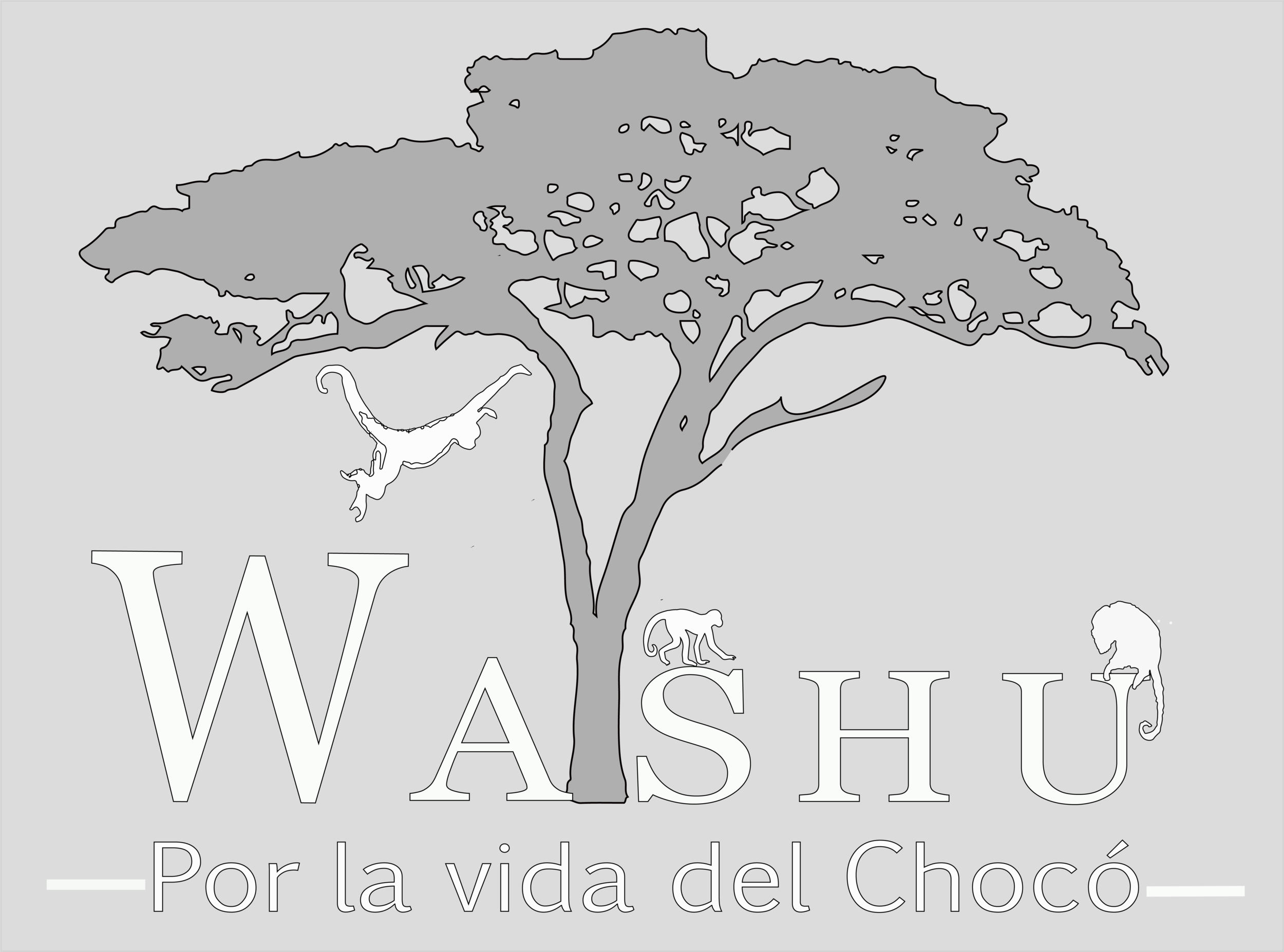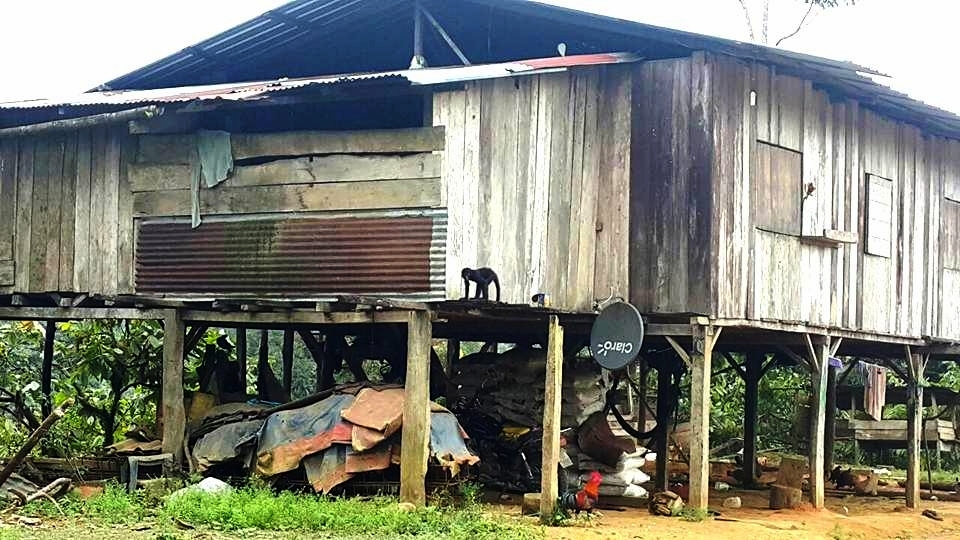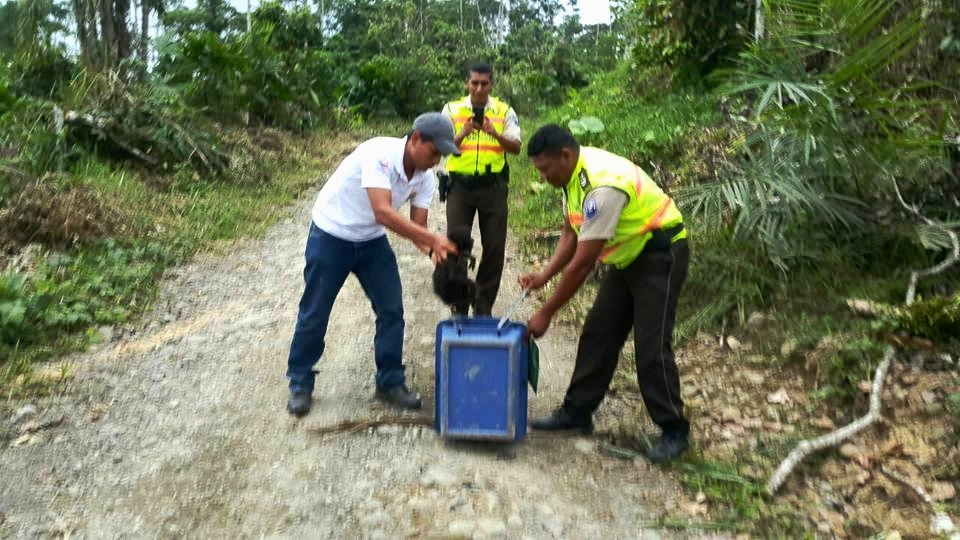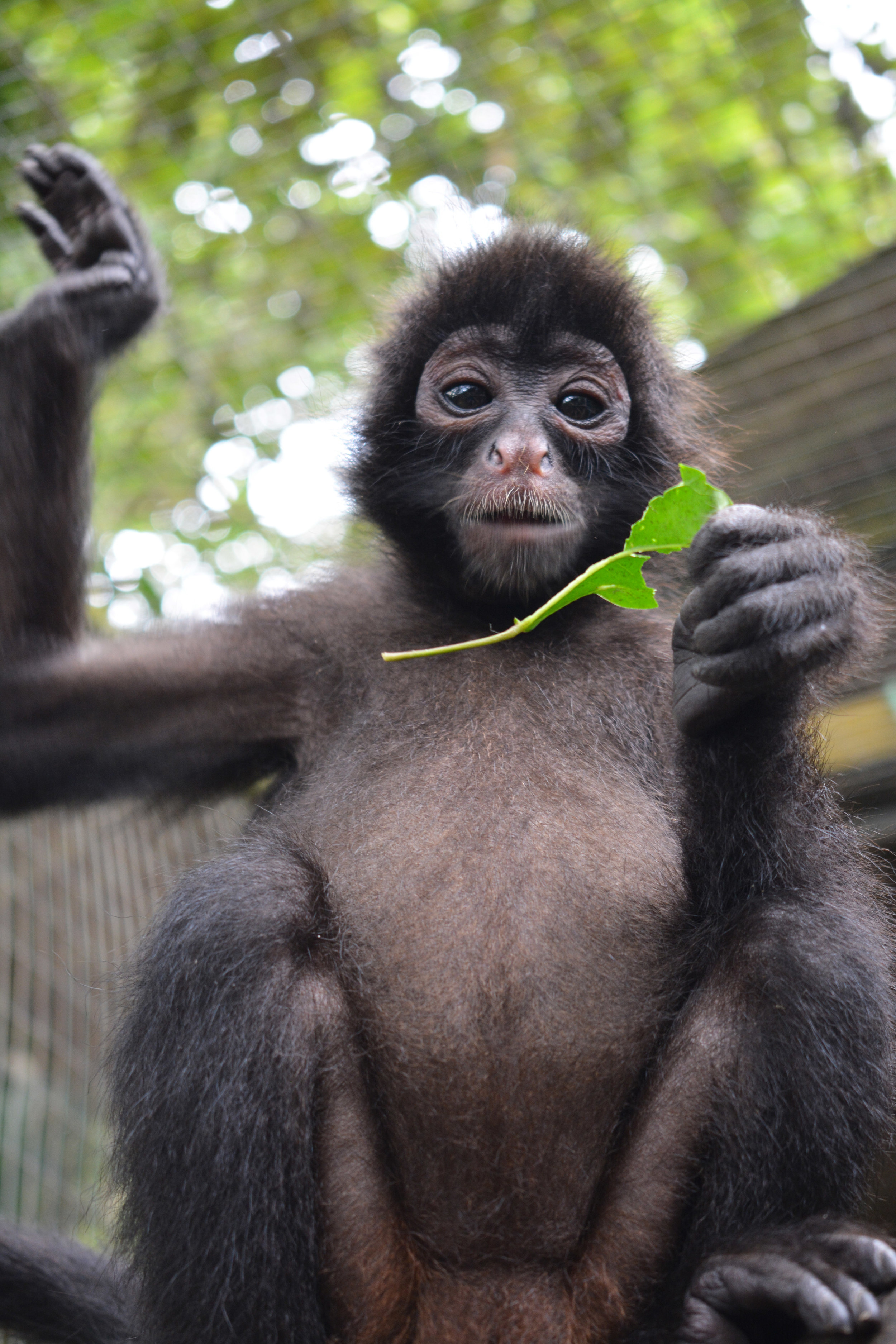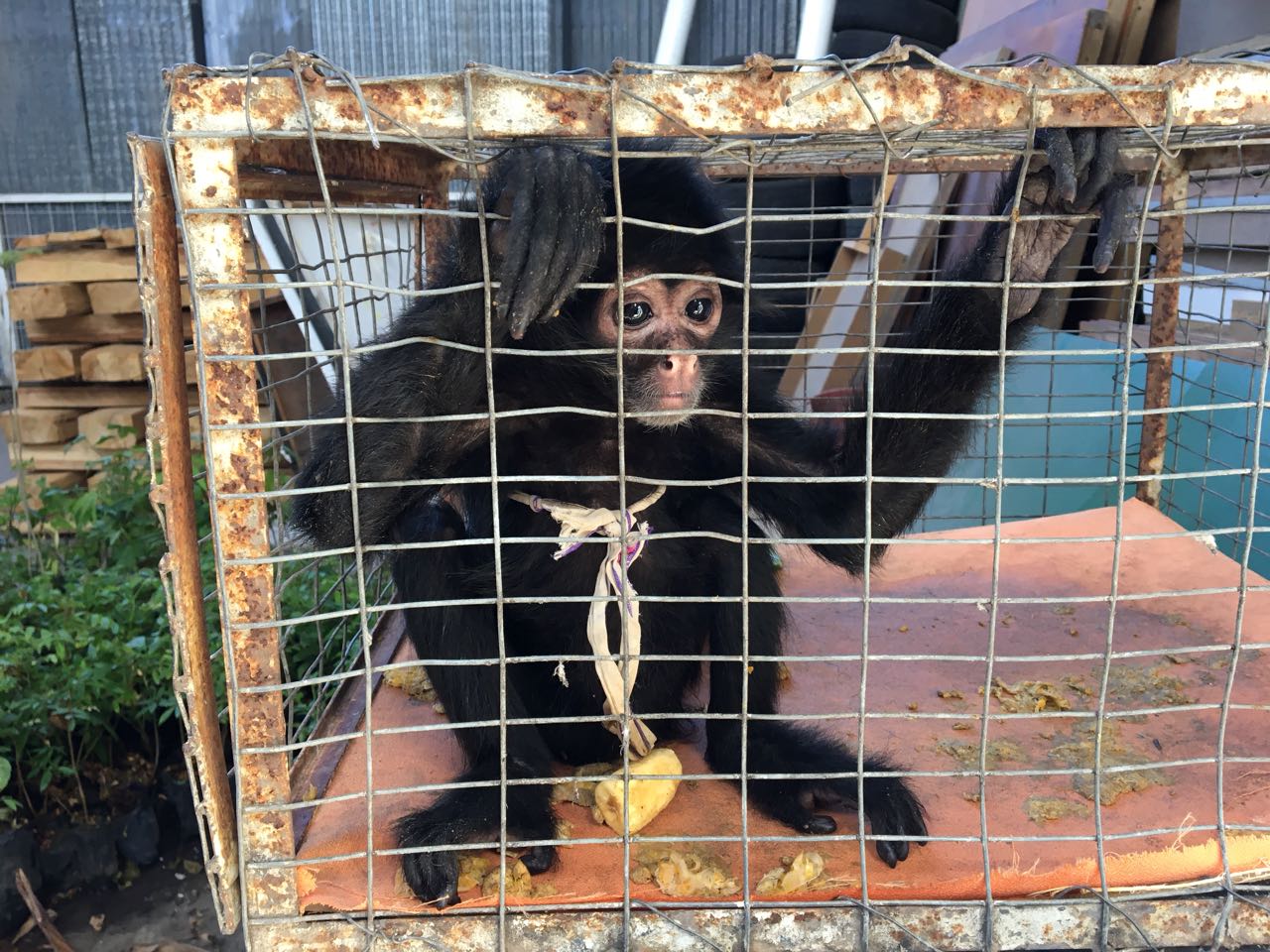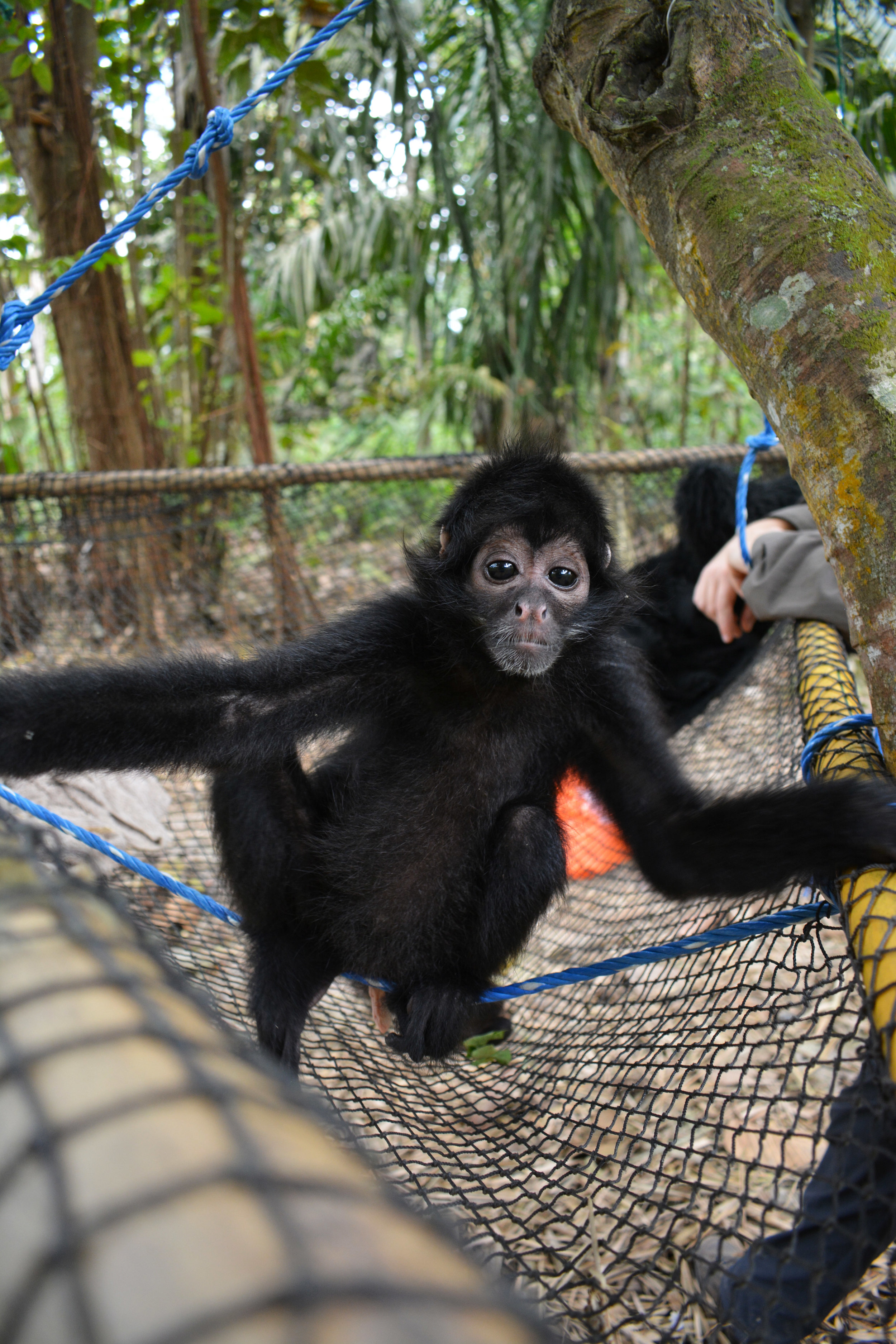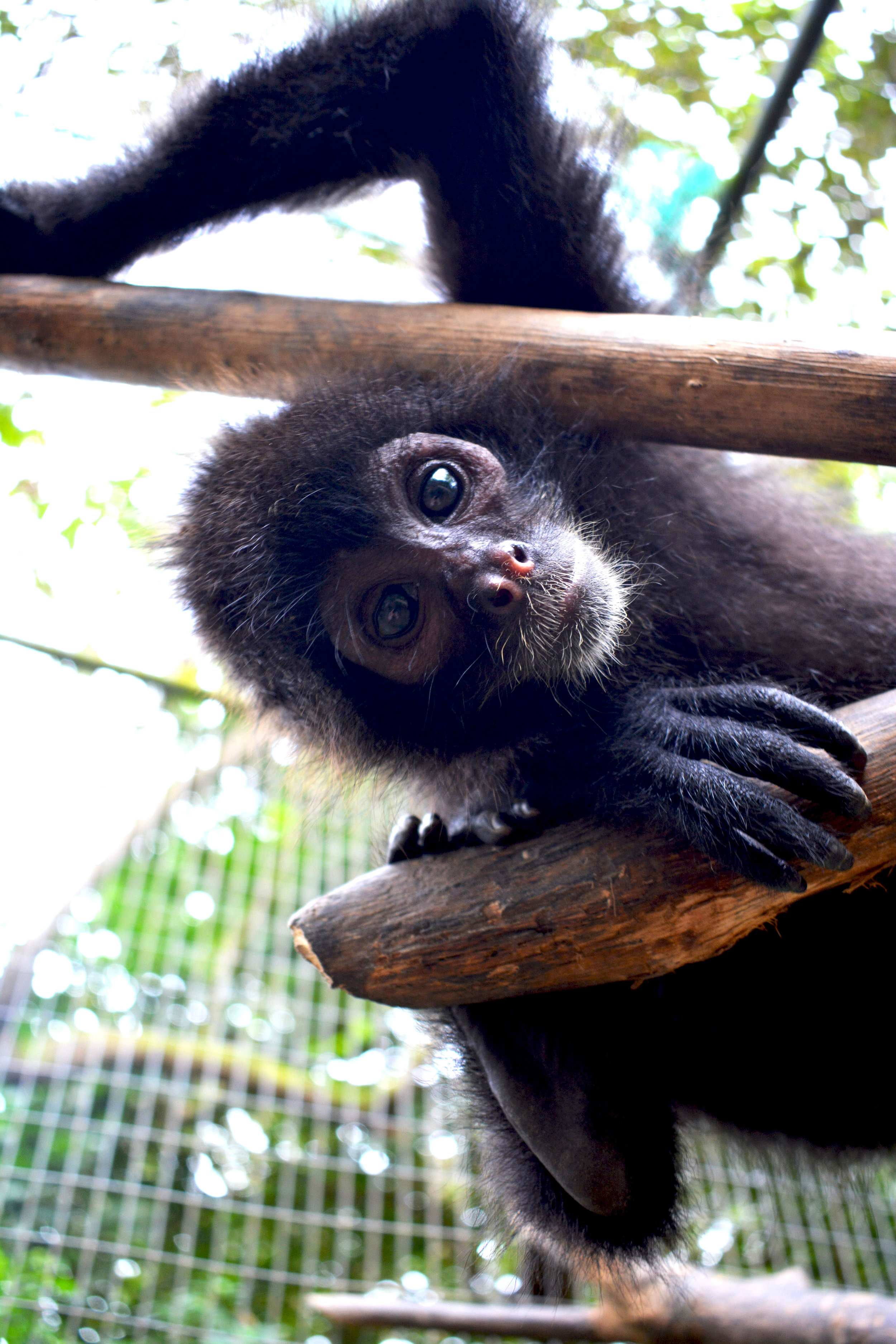TRAFFICKING AND ILLEGAL TRADE
One threat that faces primates and wildlife in general, is trafficking and illegal wildlife trade. This commerce leads to the most tragic consequences, thousands of animals losing their lives and liberty.
The reality of the threat
In order to capture a primate it is neccessary to kill the mother, then some young die when they fall during this process whilst others die during trading. Very few animals are rescued and less than 1% return to freedom. This means that most spend the rest of their lives in cages or chains, far from the forest from which they should have never left.
OUR WORK
In 2014, we took charge of an ex-situ conservation program of the species, which was known as the Jambelí Ecological Recue Foundation. We added a rehabilitation program for the individuals that were in the old installations of the Jambelí Ranch, Guayas province.
Part of our program involves us receiving, managing, caring for and rehabilitating the spider monkeys, additionally we monitor and carry out behavioural studies whilst veterinary requirements are under the charge of the Veterinary Hospital of the San Francisco University of Quito through the Tueri Institute for wildlife conservation. ad San Francisco de Quito a través del Instituto Tueri conservación de fauna silvestre.
Help and participate
The objective of Washu is to rehabilitate this species of primate so that they can be released in the future, and we work to care for those that will not be able to be released. We are committed to offering them a life considerate of both their physical and psychological wellbeing.
Trafficking and illegal trade is always occurring in Ecuador; currently we have 31 spider monkeys that are in need of all this care.
ADOPT A MONKEY!
The babies that have been seized were victims of trafficking and illegal wildlife trade, present when their mothers were killed and pulled from the forest so that they could be kept in houses with insufficient food. Our work is focused on placing them with a group of monkeys so that they can once again be with their own species and be rehabilitated for the opportunity to return to the wild. Furthermore we supplement their nutritional deficiencies through a varied and supplemented (Pediasure) diet.
Rehabilitation programs are expensive and time consuming; through adoption of babies you will contribute to covering monthly expenditure and help us to care for them!!
If you would like to adopt a monkey you can contribute to their feeding through monthly support of 20 dollars, this would contribute to helping in all of their care and maintenance costs. We will send you photos.
INFORMATION FOR ADOPTING
Current account: 2100151800 Banco del Pichincha
Name on account: Fundación Naturaleza y Arte
Subject: Adopt a monkey/ Name of the monkey you wish to adopt
International transfer Swift code: Picheceq
También puedes ayudarnos con donaciones de cualquier monto! Gracias por ser parte!
Learn here about the spider monkey babies and some of their stories.
CHIPALA
She was seized by the Environment Agency in the province of Esmeraldas, found in a house where she lived outside, together with chickens, tied to a rope so that she could not escape. When she arrived at the centre she had dry skin that bore marks from the rope, she was dehydrated and malnourished.
The change now is evident, she has formed part of the group of infants in our program.
Her name means “great” in the indigenous Cha'palaa language.
NARAA
Naraa was seized in the Imbabura province, kept in a very small cage within which she could barely stand up (photo 1). Malnutrition lead to a calcium deficiency so severe she could hardly move. Now, thanks to the care and nutrition she has received, she has formed part of the group of infants and is moving about like a spider monkey should.
NUNI
Nuni was rescued south of the city of Quito and a veterinary team at the Guayllabamba zoo initially led her care. She was very small when she was found. She arrived to the centre at the same time as Naraa and from then on, they have been like sisters; she learnt from Naraa how to eat the new leaves of the Jocote tree. Today she is doing well and is part of the infant group.
MUYU Y URU
They both received their initial care at the Yakusinchi wild centre, where they were as close to one another as they are today. Muyu prefers to always be close to Uru, who is the largest of the infants and who the others take lead from.
